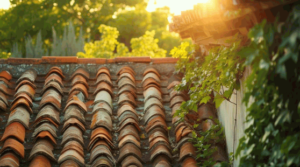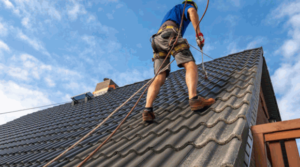Smoke damage on painted walls is a common problem. It not only ruins the look of the walls but also puts your health at risk due to toxic particles. Here’s how to clean it.
1. Ventilate the area well. Open windows and use fans or air purifiers. This helps stop the smoke smell from spreading.
2. Understand the paint type. Water-based paints can be damaged by moisture, so be careful. Oil-based paints are tougher and can stand harsher cleaning.
3. TSP is an effective method. It can be found in most hardware stores. Mix TSP with warm water then apply with a sponge or cloth. Scrub the affected areas until the stains vanish. Rinse with clean water afterward.
4. Vinegar and warm water work wonders too. Mix equal parts and apply directly on stained areas. Let it sit for a few minutes, then scrub with a sponge or cloth. The acidity of vinegar breaks down tough stains without harming the paint.
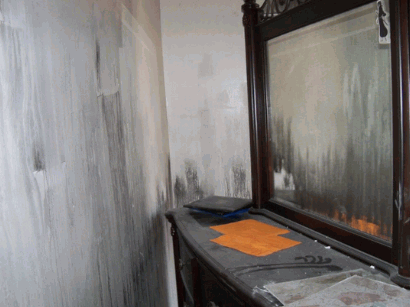
Understanding The Effects Of Smoke Damage On Painted Walls
Smoke damage on painted walls can have a major impact. A layer of residue, and a strong smell, accompany this damage. The residue discolors the paint and seeps into its texture making it hard to clean off. So, it’s essential to understand the effects of smoke damage on painted walls.
1. The smoke residue stains and blemishes the paint. It also penetrates deep into the pores and crevices of the painted surface and is hard to clean. Additionally, the smell of smoke can linger for a long time, harming air quality.
Other details about smoke damage should not be ignored. Prolonged exposure to smoke can make the paint lose its vibrancy and fade. Synthetic materials can leave behind dangerous substances, too. So, it’s important to take action immediately when dealing with smoke damage.
To restore your walls, act quickly and seek professional help when needed. Ignoring or delaying the cleaning process could cause further damage. Act now and protect your home from the odors and blemishes caused by smoke damage. Quick action will prevent additional damage and ensure a clean living space. Don’t let fear hold you back. Address the issue immediately!
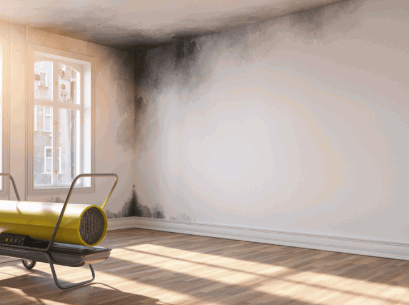
Gathering The Necessary Materials For Cleaning
Gather all the materials you need before starting the cleaning process: mild detergent, specialized smoke remover, a clean bucket, sponges or microfiber cloths, gloves, and protective clothing.
To ensure the best results, test any cleaning product on a small area of the wall first. Then, start scrubbing from the top of the wall and work your way down. Rinse with clean water and dry the wall thoroughly when done.
Patience and attention to detail are necessary to achieve the desired results when dealing with smoke damage on painted walls.
Preparing The Area For Cleaning
Start by clearing the space around the walls. Remove furniture, decorations, and other items that could get in your way. This will make sure you have a clear area to clean.
Use drop cloths or plastic sheets to protect flooring, furniture, and any other surfaces that could be damaged by cleaning solutions or debris. Open windows and doors to ventilate the area and remove smoke odor. Wear protective gear such as gloves, safety goggles, and a face mask.
Test an inconspicuous area first. Apply a mild cleaning solution, like vinegar and water, or a smoke damage cleaner designed for painted surfaces. Don’t use harsh chemical cleaners, as they may strip paint or cause more damage.
Follow the instructions on the cleaner’s label. Make sure the walls are completely dry before repainting or restoring them. Moisture leads to mold growth and paint adhesion issues.
For tough smoke damage, get professional help. They have the knowledge and expertise to tackle it effectively. Pay close attention to detail and you’ll get amazing results.
Dig Deeper: Home Remedies For Slippery Floors
Step-By-Step Instructions For Cleaning Smoke Damage
To tackle smoke damage on painted walls, we need a systematic approach. Here’s how to clean effectively:
| 1. Assess the damage. Take a look at the severity of the smoke damage on your walls. This will help decide what cleaning method and products you’ll need. |
| 2. Ventilate the area. Before starting, ensure good airflow by opening windows or using fans. This will reduce any lingering smoke odors. |
| 3. Remove loose soot. Carefully remove particles from the walls using a dry sponge or soft brush. Don’t scrub too hard, as this could cause more damage. |
| 4. Clean with vinegar solution. Make a spray bottle mix of equal parts vinegar and warm water. Spray it onto the affected areas, then wipe away the residue with a cloth or sponge. Vinegar’s acidity breaks down soot and neutralizes odors. |
| 5. Tackle stubborn stains. For stubborn stains, apply a paste made of baking soda and water. Let it sit for a few minutes, then gently scrub it with a soft brush or cloth. |
| 6. Rinse and dry. Rinse the walls with clean water, using a damp cloth or sponge. Once dry, assess if any touch-ups are needed. |
Remember to wear gloves and protective eyewear when working with cleaning solutions. With this knowledge, we can maintain healthy indoor spaces free from harmful residues.
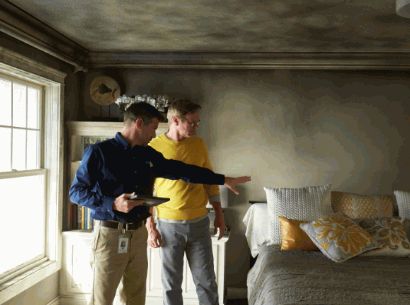
Additional Tips For Effective Smoke Damage Cleaning
Professionals advise using extra tips for an effective smoke damage clean. Here are some ideas:
- Wear protective gear such as gloves and a mask to avoid inhaling hazards.
- Ventilate the room to remove any smoke odor.
- Use a vacuum cleaner with a HEPA filter to eliminate soot and debris.
- Gently wipe walls with a damp sponge or cloth in warm water and a mild detergent mix.
- Repeat if needed until walls are clean and free of smoke residue.
For further smoke damage cleaning, consider these details:
- Start with small wall sections and step-by-step work around the room.
- Natural cleaning solutions like vinegar or baking soda mixed with water can be effective.
- They are eco-friendly alternatives and save money.
- Understand why each suggestion works effectively.
- Gentle cleaning with warm water and mild detergent removes smoke stains without damaging delicate surfaces.
- Using natural cleaning solutions efficiently breaks down stubborn residues safely.
By putting these tips into practice, you can restore your painted walls from smoke damage and create a safe, clean environment.
Conclusion
This article has explored methods to clean smoke damage from painted walls. Follow these techniques to restore walls and banish odors!
- First, assess the extent of damage. This will determine the appropriate cleaning approach and products. Wear gloves and a mask for safety.
- Second, use various cleaning solutions for smoke stains. From vinegar and water for lighter stains to stronger chemical cleaners for tougher marks. Test each solution on a small area first.
- Third, proper ventilation is key. Open windows and use fans for smoke smell and fumes from cleaning agents. Baking soda helps deodorize walls.
- Finally, seek professional assistance if unsure about tackling damage or if it is severe. Pros have specialized knowledge and gear to address it efficiently while minimizing harm.

